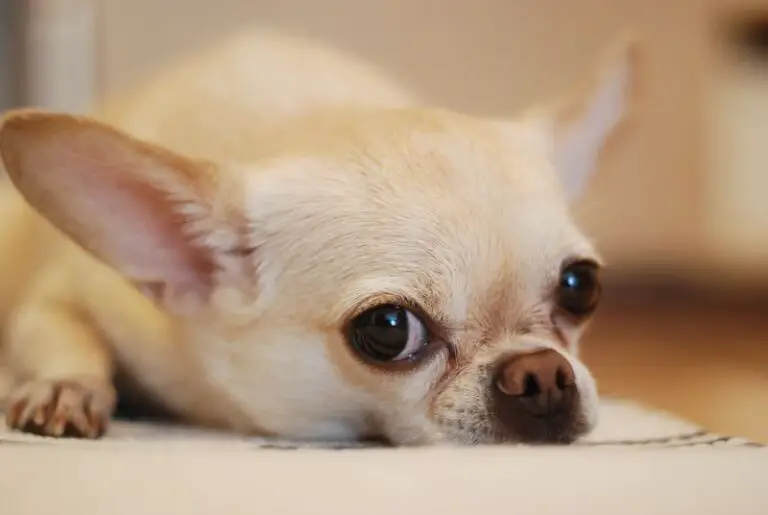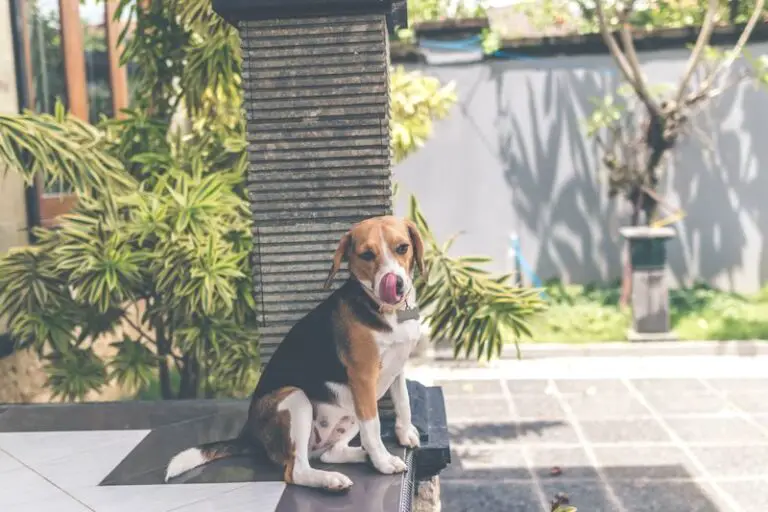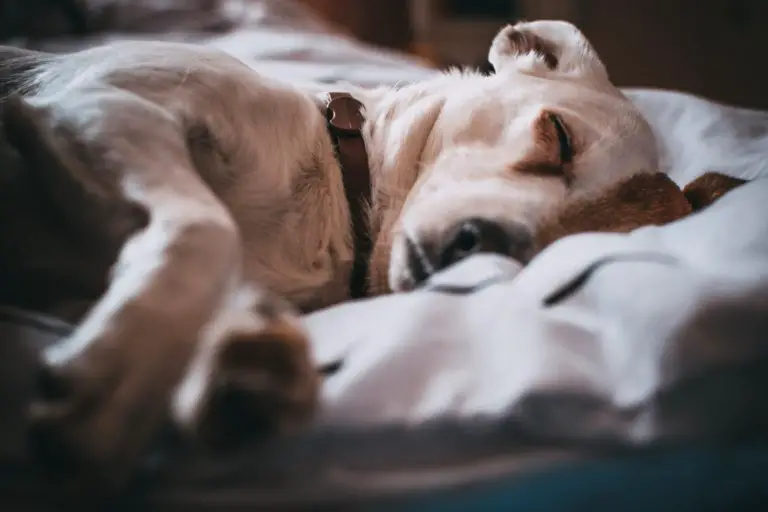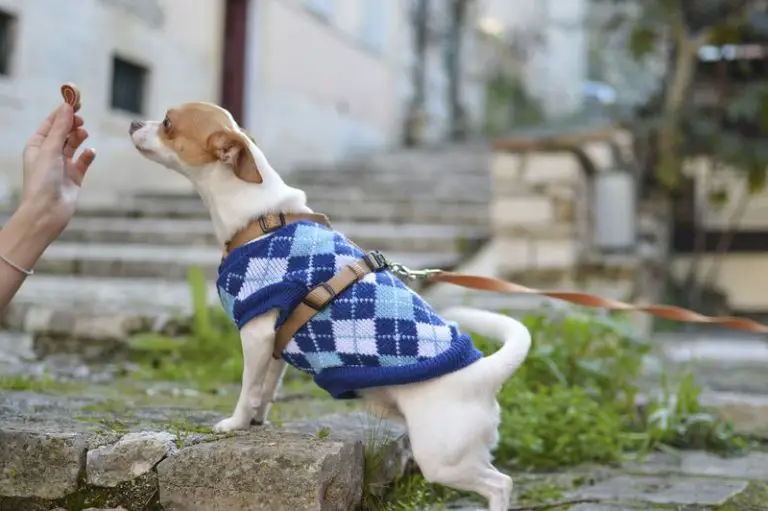How to Introduce a Puppy to a Cat | A Step-by-Step Guide
Having a new addition to the family, whether it is a pet or a person, is an exciting and often overwhelming experience for everyone in the household. However, people can express their concerns and talk to others about how to handle the situation.
Unfortunately, animals cannot vocalize when they are thinking about any new additions to their family. This means that it is up to you to ensure that introductions are made as smoothly as possible.
Of course, the way you go about introducing a new member of your family to your pet will depend entirely on who you are introducing and what kind of pet you have.
One of the most common examples of this is when a family that already owns a cat decides to adopt a puppy.
Some people think that there are no precautions to take because most cats are mellow creatures, but this is far from the truth. When bringing a puppy into the family, it is important that you take the right steps to ensure a safe and comfortable introduction.
This will substantially increase the chances that your puppy and cat get along.
There are several ways that you can go about introducing your new puppy to the family cat. Some people choose to take the long method, letting the cat and puppy get used to each other at their own pace.
Other people take the puppy to meet the cat face-to-face right off the bat.
While the second option certainly doesn’t take as long, there is a much higher risk for something to go wrong. Instead, you should take time to slowly introduce a puppy to a cat so that neither one feels too overwhelmed.
With that being said, there are a few things to keep in mind before you begin.
Things to Note Before Introducing a Puppy to a Cat
Patience is going to play a key role in this. If you force your cat to share a room with a hyperactive and playful puppy, your cat may feel fearful and even threatened by this new creature. This can lead to your cat lashing out at the dog, leading to injuries on both sides. This is an outcome that nobody wants.
It is imperative that you let your cat and puppy go at their own paces for the majority of this. While this may be a lengthy task, the results will be well worth it in the end.
Additionally, it is important to note that the way your cat reacts will depend on the cat’s age, how socialized the cat is, and how the cat responds to new and different situations.
Kittens and puppies have a better chance of getting along as they are both young, excited and curious. Elderly cats tend to be more cautious and closed-off to newcomers, leading to some difficulties in introductions.
Cats who have been socialized (introduced to other animals to get them accustomed to their presence) from a young age will have a much easier time accepting the puppy as a member of the family. On the other hand, cats who have never met a dog before may be fearful of this new, energetic and strange creature.
And finally, all cats respond differently to meeting a new creature. Some cats are inherently curious and will try to overcome their fears to get used to the dog. Other cats are skittish and will take a long time to accept the dog.
There are also cats that react violently to stressful situations, and if you know that your cat is prone to this, you will need to keep a close eye on the cat and its interactions with your new puppy.
Keeping these things in mind will help you understand what both your puppy and your cat are going through as they adjust to these major changes in their lives. Now that you know a little bit about what to expect, you should begin preparing the house for the cat and puppy to get to know each other at their own pace.
Step One: Getting the House Ready
In a best-case scenario, you will have a spare room that you are not using that you can use to let your cat and puppy acclimate themselves to each other. However, a room of the house that has enough space for the cat and puppy (as well as the cat’s belongings) will suffice. This method of introduction works by gradually increasing the presence of the puppy in the cat’s life, allowing both animals to get used to each other.
This helps to combat a puppy’s overwhelming interest and playfulness that could stress your cat out.
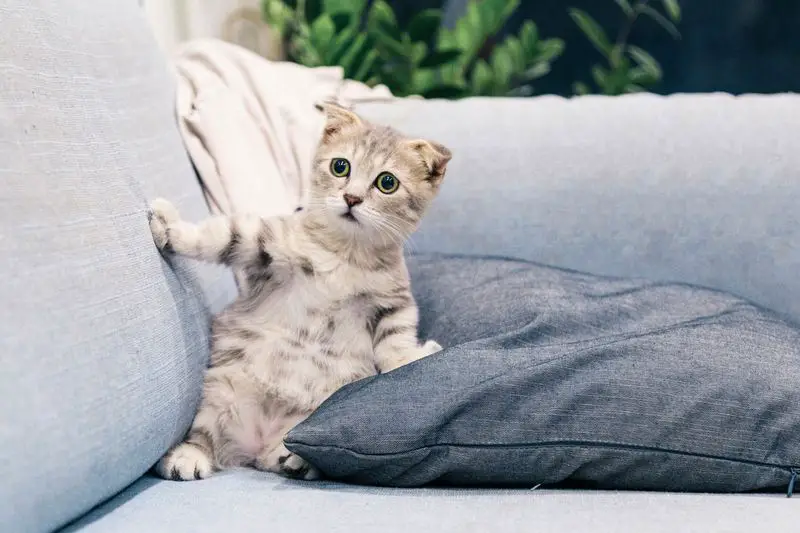
In this room of the house, you will want to make sure that the cat has all of the things it needs to live in that room. This includes a litter box, toys, food, and water. You should also purchase an adjustable gate for the door that you know your cat cannot get through.
This gate acts as a barrier for the cat and puppy to see each other, but not to get too close to each other. Your cat is going to be spending most of its time in this room as it gets used to the dog’s sight, smell, and sounds.
Doing this will also give the puppy time to explore its new home and surroundings without accidentally terrorizing the cat. Your puppy will also be able to smell the cat’s favorite places, will learn to live with these smells, and will (hopefully) grow out of the need to mark its territory.
Step Two: Getting Used to Each Other
Next, you will want to begin bringing the puppy near the gate of the cat’s new room. Here, the cat and puppy will be able to see and smell each other, but not get too close for comfort. Shortly after the puppy and cat have noticed each other, you should try to take your puppy’s attention away from the cat.
This can be done with treats or toys, and if your puppy has learned commands, you can use those as well. If your puppy has a tendency to run around a lot, you may want to keep it on a leash while doing this.
If your puppy is able to focus its attention away from the cat, despite the cat being visible in the room, you should reward the puppy with treats and praise. This helps your puppy recognize that the right thing to do is to not give the cat 100% of its attention.
Treat training a puppy is an incentivized form of training that owners can use to reward their pups for doing something good, such as obeying their commands.
If your puppy is a little bit too excited to see the cat, you may have to change things up. Instead of keeping the door open and allowing the cat and puppy to see each other, you will want to close the door.
If you’re finding it hard to calm your puppy, utilizing calming treats like Zesty Paws Calming Bites (link to Amazon) will help to easily and effortlessly get them to relax and simmer down.
Next, you will want to feed the cat and puppy on their respective sides of the door. This will help each animal associate scents with each other without getting overly excited.
To make more progress with this, you can switch out blankets and beds that each animal has used to further get the animals used to each other without stressing them out.
The goal of doing this is to help desensitize your puppy to the cat’s presence. To a young and excitable puppy, the cat’s presence is something new, exciting, and unknown.
When a cat is faced with such an excited dog, especially if the cat has never interacted with a puppy before, this can be overwhelming and terrifying. This can lead to both animals getting overstimulated and lashing out at each other.
By desensitizing your puppy to the cat’s presence, your puppy will soon learn to not treat the cat as something new and special, but as just another animal in the house. It also helps the cat get used to the dog’s presence, even if it doesn’t always like the dog. This process can sometimes take just hours, but for some puppies (and wary cats), this can take months. Each animal is its own individual and will learn at its own pace.
Step Three: A Face-to-Face Meeting
When you believe that your cat and puppy have properly desensitized themselves to each other, then it becomes time for a face-to-face meeting. This step is as simple as it sounds.
It is time to let both animals truly meet for the first time.
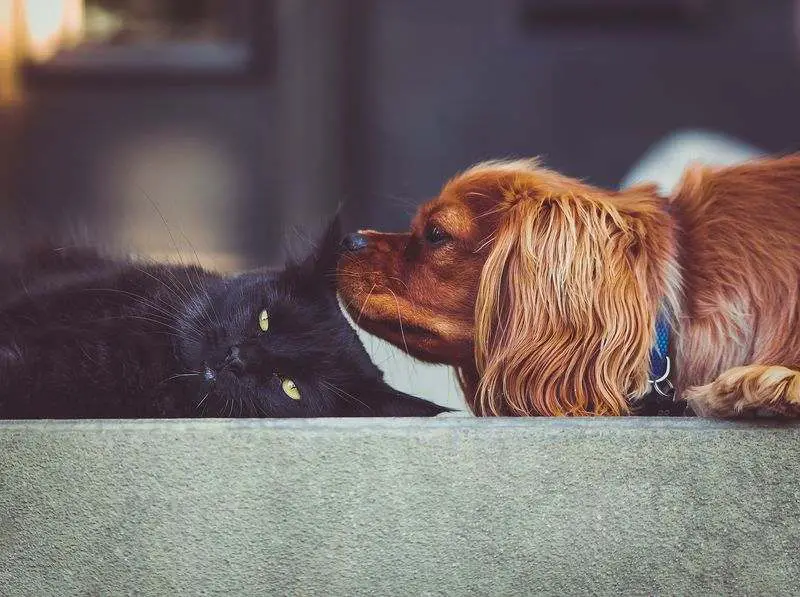
If the desensitization worked, then both animals might sniff each other a little bit more and then go about their business. However, you should still take the proper precautions to ensure that things go smoothly on both of the animals’ parts. This is often a two-person event, although it can be done alone if you can pay attention to and control both your cat and puppy.
For your puppy, you are absolutely going to want to keep it on a leash. Optimally, your puppy should know and obey commands so you can tell it to “sit” or “stay,” although if it doesn’t, it may be small enough to simply physically remove it from the encounter.
You will also need to pay close attention to your dog’s body language. You should keep an eye on it to ensure that things remain calm, playful, and comfortable. If you see your puppy turning to signs of fear or aggression, it may be time to try this another day.
The same applies to your cat. You should have someone else keep an eye on the cat’s body language.
That person should make sure that the cat does not show extreme fear (some degree of wariness and caution is to be expected) and doesn’t begin to show aggressive behavior. A cat usually cannot do too much damage to a puppy, but it is best to stop any fights before they start.
If your puppy is calm at first, make sure that you get it to sit or stay in place.
This will allow the cat to freely sniff and move around the puppy at its own pace. If the puppy continues ignoring the cat or at least doesn’t move and try to chase it, you should give it lots of praise and treats for doing the right thing.
If you notice that your puppy is staring the cat down (watching the cat calmly is fine, but it should not take all of your dog’s attention), has a stiff body, or doesn’t respond when you call its name, you may want to stop for the day and try again another time.
For puppies that are extremely excitable, you should be ready to stop the puppy from lunging at the cat at a moment’s notice.
If the puppy is noticeably agitated or fixated on the cat from the moment you bring it into the cat’s room, this is a clear sign that they are not quite ready to meet face-to-face yet.
It will often take a couple of sessions of this for both the puppy and cat to get used to each other. If both animals seem relatively content with each other, then you likely won’t need to keep the cat in a separate room for much longer.
On the other hand, if your puppy is too fixated on the cat, you may need to continue bringing the puppy by the cat’s gate more often to get them acclimated to each other. Even after the gate is taken down, you should still keep an eye on the cat and puppy’s interactions with each other to ensure that they accept each other’s presence.
I recommend using a pet camera (link to Amazon) to monitor them for times when you’re not around and so that you would be better able to track their progress.
Knowing When to Stop for the Day
When you are doing any of these steps, you will want to pay attention to the body language of both your cat and puppy. This is an experience that is, quite literally, world-changing for both your cat and puppy. Understandably, this can be immensely stressful on both parties. Often, your cat and puppy’s body language will give you a good idea of when each one has had enough interaction with the other for the day.
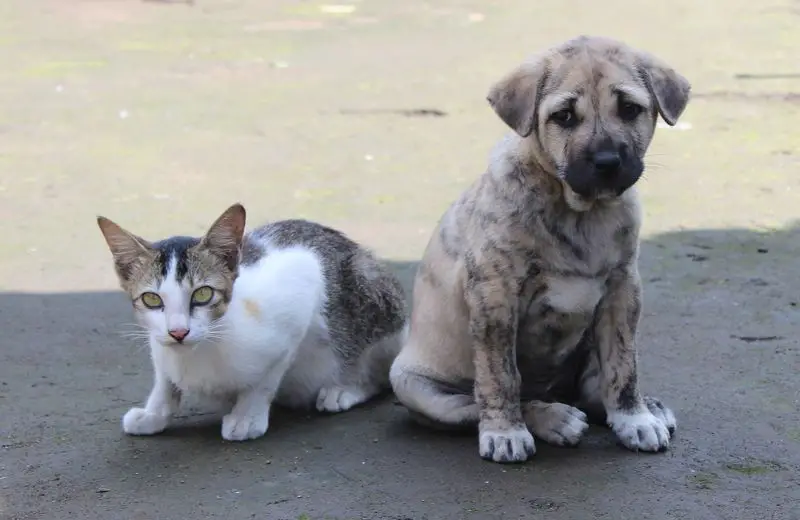
For your puppy, it can be quite frustrating that there is another animal on the other side of a gate that they can see, smell, and hear, but cannot actually touch. This can agitate your puppy, causing it to become restless and overly fixated on the cat.
When this happens, it may become stiff, try to stare the cat down, and won’t respond when you call it by name. Your puppy may whine, bark, and paw at the cat’s gate as well, which can stress a wary cat out even more. When this begins to happen, you will want to direct your puppy’s focus elsewhere and remove it from the situation, allowing both animals to calm down before trying again.
For your cat, having a strange creature enter its pre-established territory can be immensely stressful. Cats love routine and order, and a new puppy is the complete opposite of that. It will take your cat some time to accept that there is another animal in the house, one that wants its own territory and belongings.
When your cat is beginning to become overwhelmed by the puppy’s presence, you will notice it shifting its tail back and forth, or even tucking its tail underneath itself if it is very scared of the puppy. It may raise its back, stick its fur up, and act generally restless.
At the extreme, your cat may growl, hiss, and run away from the puppy. When you notice your cat acting like this, you should take the puppy away and comfort the cat with playtime, treats, or petting and try again another time.
By doing all of this, you can ensure that given some time, you will be able to successfully introduce a puppy to a cat and set both up to have a long-lasting friendship with each other.
I hope that you have found this article to be both helpful and informative. Ultimately, I hope I have been able to equip you with the necessary tools to introduce a puppy to a cat.
You may find this article informative:




